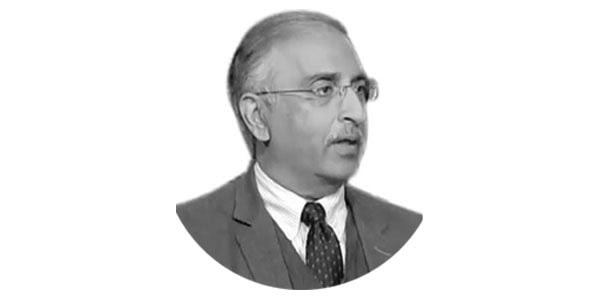The exchange rate – Will artificial restrictions work?
An exchange rate is the “rate at which one currency will be exchanged for another currency.” A currency peg is a “policy in which a national government or central bank sets a fixed exchange rate for its currency with a foreign currency or a basket of currencies.”
Saudi Arabia, for instance, has a fixed peg to the US dollar-the exchange rate has remained unchanged at 3.7500 since 1986.
The UAE dirham is pegged to the US dollar at 3.6725. At the other end of a fixed currency peg is a floating exchange rate which is determined in the private market through the forces of demand and supply.
No one knows what the rupee-dollar exchange rate should be-the Ministry of Finance does not know neither does the State Bank of Pakistan. The only entity that knows the rupee-dollar exchange rate is the market.
In 1992, the Bank of England mistakenly thought it knew what the pound-dollar exchange rate should be. The Bank of England lost billions of dollars trying to save the pound from falling. The Bank of England lost billions of dollars fighting the natural forces of the market.
George Soros, a Hungarian-American currency speculator, betting against the Bank of England made a billion dollars. Then came ‘Black Wednesday’, 16 September 1992, when the forces of the market finally won and the Bank of England lost-lost badly. That is the day market forces broke the Bank of England.
Thirty years after ‘Black Wednesday’, the State Bank of Pakistan is trying to defend the rupee against the forces of the market by impos ing artificial restrictions: severe restrictions on the opening of Letters of Credit (LC), freezing the repatriation of ticket sales by foreign airlines ($225 million), restricting dividend repatriation by foreign companies operating in Pakistan (around $1 billion), payments to Google Play Store etc. Will these artificial restrictions work?
The State Bank of Pakistan is adamant that the rupee-dollar interbank parity is Rs224. In the open market, the dollar is not available even at Rs250.
As of December 9, the SBP has net reserves of $6.7 billion (almost all are borrowed funds). Can the SBP fight the market forces of demand and supply with borrowed reserves of $6.7 billion? Can SBP succeed where the Bank of England lost-lost badly?
To be certain, the SBP’s rupee-dollar interbank parity of Rs224 will break at some time in the not too distant future.
And when the parity breaks there will be a big devaluation of the rupee and economy-wide massive dislocation. In emerging markets with similar economic features ‘big’ has meant 20 percent to 25 percent.
In other emerging markets banks became insolvent. In other emerging markets governments were unable to pay the principal or interest on its debts and external obligations.
Yes, there have been heavy political costs of currency crisis. In 22 percent of the cases “one of the two main officials with economic respon










